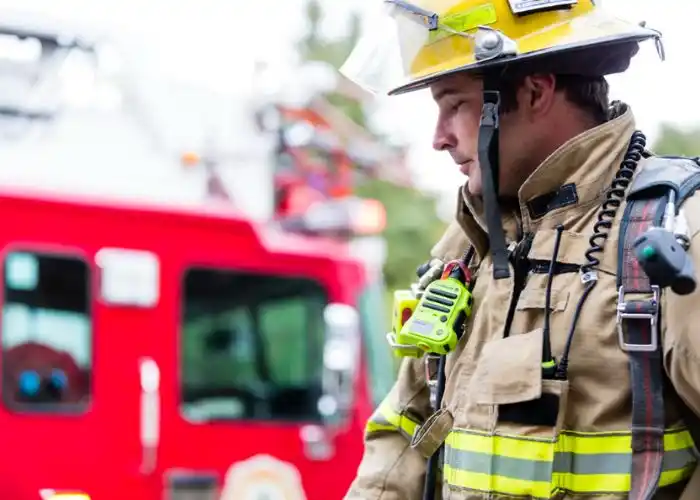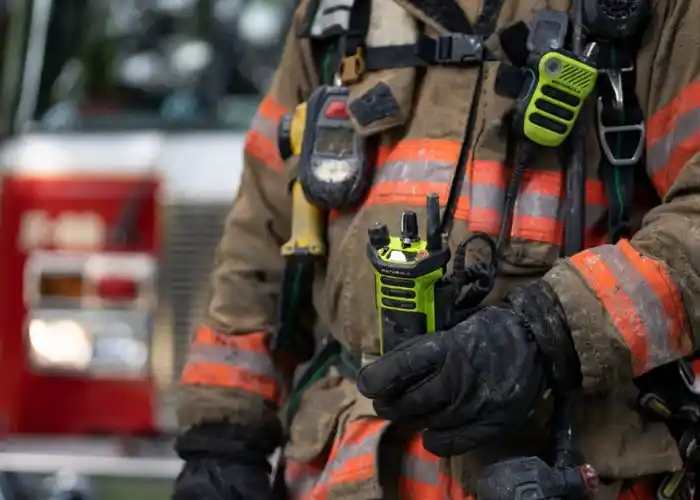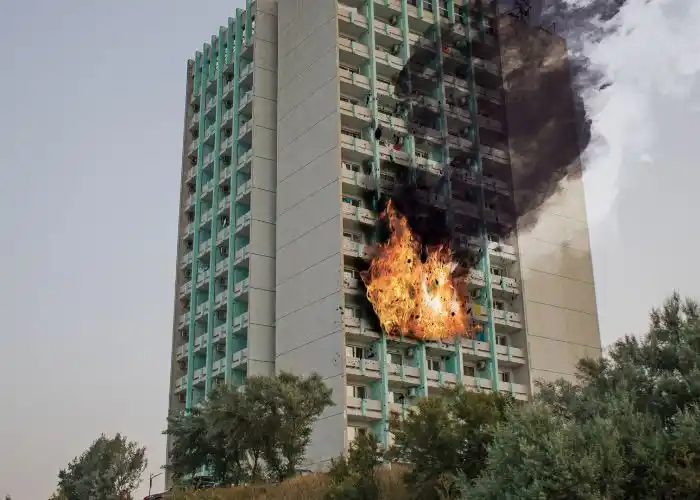.A bi-directional amplifier (BDA) system helps improve radio signal strength inside buildings. It makes sure that people can communicate effectively, especially during emergencies. Here are the basic components of a BDA system.
- Antennas: These capture the radio signals from outside a building and transmit them inside. They also send signals from inside a building back outside.
- Amplifiers: These increase the strength of radio signals so they can travel further and penetrate building materials.
- Signal boosters: These devices make sure that radio signals remain strong and clear throughout a building, reducing dead spots.
Also referred to as the Emergency Responder Communication Enhancement System (ERCES), a BDA system improves and spreads radio signals within a building, helping to meet safety requirements set by the National Fire Protection Association (NFPA) and local fire marshals.
Importance of BDA Systems in Public Safety
BDA systems provide reliable two-way communication by receiving and amplifying transmissions from radios inside a building to the repeater antenna outside. They distribute radio frequency (RF) signals throughout a building, making sure that communication remains clear and strong.
Reliable communication for first responders is non-negotiable during emergencies. These systems are specifically designed to overcome interference and common barriers to signal strength, such as concrete, metal, underground structures, and various building materials. In these high-stakes situations, even the smallest delays in communication and action can lead to disastrous results. BDA systems play an integral role in these situations by maintaining strong communication links.
National Fire Protection Association and Local Fire Marshall Requirements
The NFPA sets several requirements for BDA systems to prioritize and enable proper communication during emergencies. Here is a brief overview of NFPA requirements.
- Radio signal strength: According to the 2021 NFPA 1 Fire Code, both new and existing buildings must maintain a minimum radio signal strength for emergency services. The Authority Having Jurisdiction (AHJ) decides the required level of signal strength.
- Emergency responder communication enhancement systems: The 2024 edition of NFPA 1, Fire Code, mandates these systems when radio signal strength is insufficient to provide an audio quality of 3.0 or higher. These systems must comply with Section 9.6 of NFPA 1221 and Sections 11.10.3.1 through 11.10.5 of the 2021 NFPA 1. Additionally, they must be listed and labeled according to UL 2524.
BDA systems must also meet other local and national regulations, such as the International Building Code (IBC). Experts can inspect these systems to confirm they meet all codes and perform signal testing for optimal performance. Local fire marshals also play an essential role by performing inspections and enforcing these requirements.

How BDA Communication Systems Work
BDAs receive weak RF signals from an external antenna, amplify them, and redistribute them through internal antennas. BDAs can operate in two modes:
- Receive mode: Amplifies incoming signals and broadcasts them throughout the building.
- Transmit mode: Amplifies and extends the range of outgoing signals from the building.
BDAs help eliminate communication dead zones, which are especially problematic for first responders who need to communicate quickly during emergencies. BDAs also improve data and cellular coverage for any carrier or device.
Benefits of Implementing BDA Radio Systems
While installing a BDA system is often about checking the requirements boxes for new construction, there are many benefits that should not be overlooked, including:
- Improved communication for emergency services: Prioritizes reliable two-way communication for first responders, helping them coordinate effectively during emergencies.
- Heightened safety for building occupants: Provides clear and consistent communication, which can be critical for evacuations and other emergency procedures.
- Compliance with legal and safety standards: Meets the requirements set by the NFPA, local fire marshals, and other regulatory bodies, ensuring your building adheres to current safety codes.
- Potential cost savings in insurance and liability: Reduces the risk of communication failures, potentially lowering insurance premiums and minimizing liability in the event of an emergency.
- Elimination of communication dead zones: Addresses areas within the building where radio signals are typically weak or nonexistent, ensuring comprehensive coverage.
- Increased property value: A building equipped with a BDA system can be more attractive to tenants and buyers, as these systems demonstrate a commitment to safety and reliability. Plus, buyers don’t have to budget for the installation themselves because it’s already done.
Installing a BDA system can also improve overall communication by enhancing data and cellular coverage for various carriers and devices. This is an added benefit for all building occupants.

Challenges and Considerations
With any large installation, there can be some challenges to work through. The most common obstacles include the following:
- Building structure and materials: Thick concrete walls, metal reinforcements, and low-emissivity glass windows can hinder signal transmission. These materials require careful planning and placement of antennas to enable reliable and optimal coverage.
- Interference issues: Other electronic devices and systems within the building can interfere with BDA signals. Identifying and mitigating sources of interference is super important for system performance.
- Maintenance and monitoring: BDA systems require regular maintenance and monitoring to confirm they continue to function correctly. This includes periodic testing and inspections to meet compliance standards.
To mitigate these challenges and considerations, it’s helpful to consult with professionals to conduct thorough site surveys to identify potential barriers and plan the installation accordingly. Use high-quality equipment and place antennas strategically to overcome structural challenges. Implement robust monitoring systems and schedule regular maintenance and testing to ensure the system remains compliant and fully operational.

